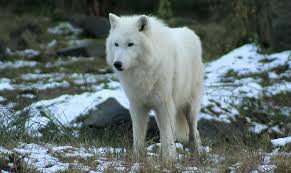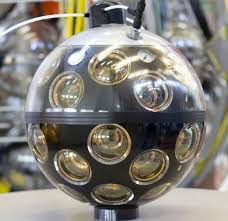It’s been over 12,500 years since the extinction of species of the dire wolves, who are known as large wolves that prey on larger animals. However, in today’s society, according to Dallas-Based Biotech Company Colossal Biosciences, “A species of wolf that died out some 12,500 years ago lives again as the world’s first successfully de-extinct animal.”
On Monday, April 7, the company had announced that Colossal scientists have made the creation of three dire wolf pups with the use of cloning, gene editing technology, and ancient DNA in altering the prehistoric dire wolf’s closest relative that is alive, a gray wolf. The result from this is important since the hybrid species is similar in appearance towards its own extinct forerunner.
Since 2021, Colossal had been doing work on resurrecting other extinct animals, such as the dodo, tasmanian tiger, and mammoth; however, the company hadn’t formally publicized its own work on the dire wolves. In a news release, Colossal’s co-founder and CEO, Ben Lamm, stated, “This massive milestone is the first of many coming examples demonstrating that our end-to-end de-extinction technology stack works. Our team took DNA from a 13,000 year old tooth and a 72,000 year old skull and made healthy dire wolf puppies.”
The three dire wolves live in a 2,000-acre site which is in a confidential location that is surrounded by a zoo-grade fencing that is 10 feet tall and 3 meters tall; this where the dire wolves are under watch by live camera feeds, security drones, and personnel. Colossal stated, “The facility has been certified by the American Humane Society and registered with the US Department of Agriculture.”
With the use of ancient DNA that was extracted from two fossils of dire wolves, the Colossal scientists and collaborators have stated, “They were able to assemble two high-quality Aenocyon dirus genomes, or complete sets of genetic information.” According to the company’s new release, the team had compared the genomes with candies that are living- including foxes, wolves, and jackals -in order to identify the genetic variants of traits that are particular for dire wolves, including longer, thick fur and white coats. Gray and Dire wolves share 99.5% of their own DNA.
Colossal’s chief science officer, Beth Shapiro, stated to CNN, “We aren’t trying to bring something back that’s 100% genetically identical to another species. Our goal with de-extinction is always create functional copies of these extinct species. We were focusing on identifying variants that we knew would lead to one of these key traits.” Then the company used the information within the genetic analysis in altering the gray wolf cells, to make 20 edits in 14 genes before cloning the very likely cell lines to transfer them inside of donor eggs from domestic dogs. Beth Shapiro, who is currently on leave from her position as professor in evolutionary and ecology biology within the University of California located in Santa Cruz, explained, “So we can take these eggs and we remove the nucleus, and then you insert the nucleus that we’ve edited from that gray wolf cell, and that is what we clone.” She also said, “Healthy developed embryos were then transferred into domestic dogs, specifically large mixed-breed hounds that acted as surrogate moms.” Also researchers have completed eight transfers in total that have an average of 45 embryos within every attempt.
According to Colossal Biosciences, on October 1, 2024, two male dire wolf pups were born while on January 30, 2025, a female pup was born. Colossal’s animal officer, Matt James stated, “When we found out that we had singleton puppies in each of those litters eventually, that was actually maybe not the optimal outcome, but it’s pretty optimal. We didn’t want to suddenly have 25 dire wolves on our hands, right? That would have been really hard to manage.” He also said, “the pups were habituated to people but not tame. The two older, male dire wolves are exploring more and more of their habitat every day, but come back to base for feeding twice a day.”
Matt said, “We’re still seeing a lot of juvenile behavior. I think they are much more standoffish, much more skittish (than gray wolves). We haven’t seen them fully express all of their behavior. They’re still juvenile when they get that testosterone surge, I think we’ll see a lot of interesting behavior.” He also said, “They’re an amazing opportunity for us to learn tons and tons about de-extinction, about cloning, about gene editing, and all the effects after that.”
The company is hoping that the technologies which contribute in creating the dire wolf could be a more direct aid for other animals that are endangered. On Monday April 7, Colossal stated, “It has produced two litters of cloned red wolves, the most critically endangered wolf species, using a new, less invasive approach to cloning developed during the dire wolf research.” Matt James stated, “The red wolf is a great example of a species that’s hindered by a lack of genetic diversity. What we could do is begin to use this technology to reintroduce founders into a population in a way that would enhance genetic diversity, the robustness, and the adaptability of a recovery program.”
An associate professor in the department of anatomy in the University of Otago located in New Zealand, Michael Knapp, said, “Colossal is correct to argue that their technology is suitable to contribute to conservation of threatened species.” He also said, “Other potential uses include editing harmful mutations out of the populations of threatened species and introducing traits that may help rare species adapt to environmental change.” Michael added, “On the other hand, the technology still has its limitations. Genes that may be introduced to give a species more fur, might have other and unwanted functions as well. Also, often not only the species, but the ecosystems they used to live in are extinct.”
Many people who are critics of de-extinction claim about the large amount of money being invested within the project that can be more better spent somewhere else and that also breeding and raising these hybrid species can possibly endanger other living animals being used as surrogates. However, a professor of environmental philosophy in the University of Montana, Christopher Preseton, stated, “Colossal appears to be paying attention to animal welfare issues, noting the size of the facility and support from the American Humane Society.” He added, “Colossal have taken thoughtful precautions to screen against any unintended genetic consequences of their edits, eliminating risky edits known to be associated with poor outcomes.” But Christopher stated, “It’s hard to imagine the dire wolves playing a role in an ecosystem, an outcome the company has said is the ultimate goal of its efforts to create genetically modified engineered mammoth-elephants.”
Christopher stated, “In states like Montana, we are currently having trouble keeping a healthy population of gray wolves on the land in the face of amped up political opposition. It is hard to imagine dire wolves ever being released and taking up an ecological role. So I think it is important to ask what role the new animals will serve.”




